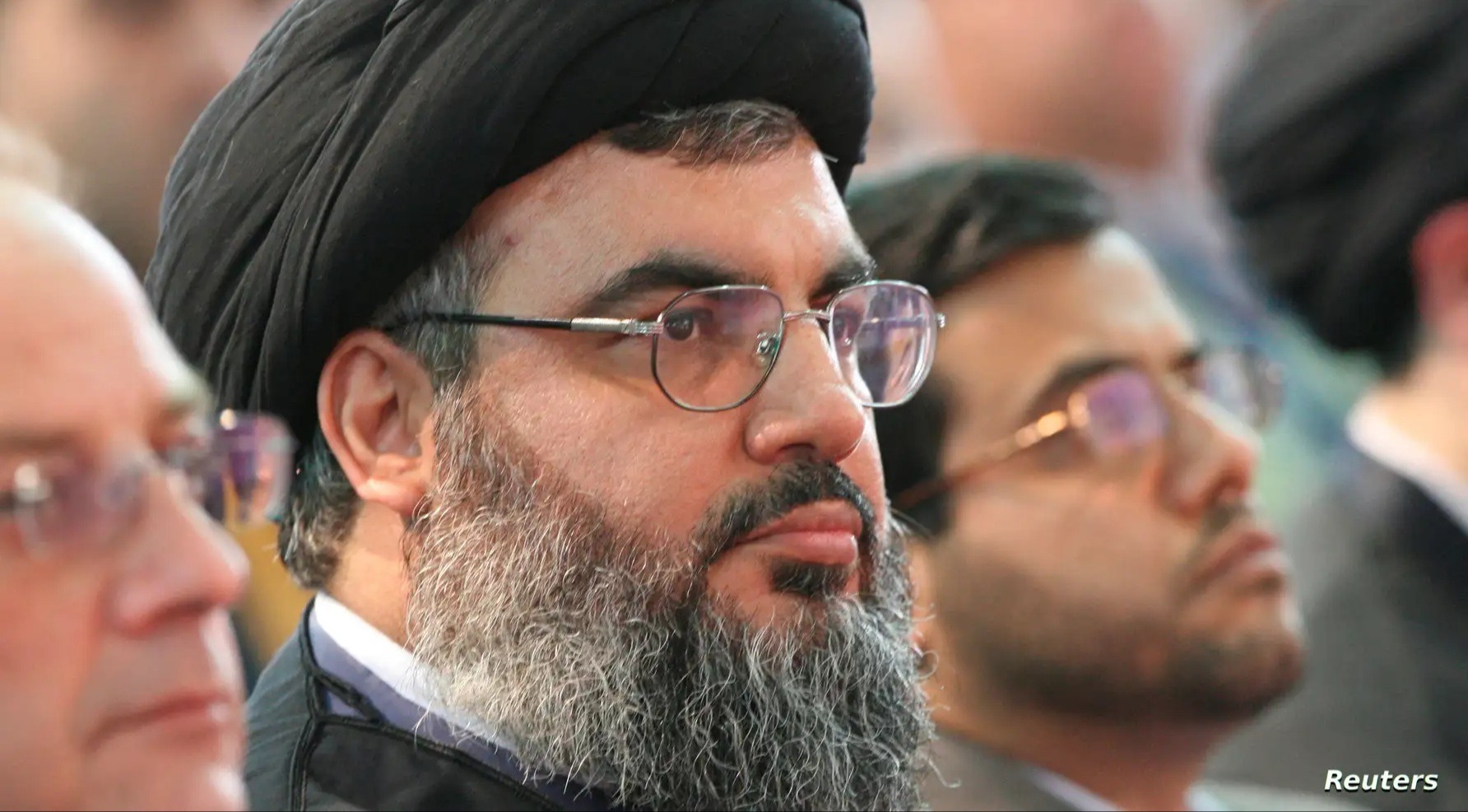


Barran Press - Al-Hurra
A special report by the Financial Times on October 1, 2024, reveals that Israel has successfully carried out precise assassination operations targeting senior leaders of the Lebanese Hezbollah militia, attributed to "high-quality intelligence."
According to sources familiar with the matter, Israel attempted to assassinate Hezbollah leader Hassan Nasrallah three times during the 2006 war with the group, though these efforts were ultimately unsuccessful, with one attack coming "close" to achieving its goal.
On the evening of Friday, Israeli forces tracked Nasrallah to a hideout deep beneath a residential complex in southern Beirut, dropping up to 80 bombs to ensure his death. An Israeli F-15I pilot boasted about this achievement, stating that the airstrike destroyed at least four residential buildings.
Despite this military success, the Israeli military and security establishment have acknowledged that for nearly four decades of conflict with Hezbollah, they only began to change the dynamics recently.
Current and former Israeli officials attribute this shift to the "depth and quality of intelligence" gathered over the past two months, which initially led to the killing of Fouad Shukr, Nasrallah’s right-hand man, on July 30.
Over the past two decades, the Israeli military's "Unit 8200" and the military intelligence agency known as "Aman" have collected vast amounts of data to map Hezbollah’s rapidly growing presence along Israel's northern front.
Former Israeli intelligence officer Miri Eisin noted that this required a fundamental shift in how Israel viewed Hezbollah, shifting from viewing it merely as a militant group to recognizing its political ambitions and growing ties with Iran’s Revolutionary Guard and Syrian President Bashar al-Assad.
Eisin emphasized that the end of Israel's 18-year presence in southern Lebanon in 2000, marked by a "humiliating withdrawal," resulted in significant losses in intelligence capabilities.
The report highlights that Israeli intelligence broadened its perspective on Hezbollah, considering it a "terrorist army" rather than just a terrorist organization, a conceptual shift that forced Israel to study Hezbollah more closely and comprehensively.
The conflict in Syria over the past 13 years has also provided Israeli spies with a "fountain of data," much of it public, including "martyr posters" used by Hezbollah to commemorate its fighters in Syria, which contained valuable information like the fighters’ hometowns and places of death.
The report further notes that Hezbollah funerals often revealed crucial information, briefly bringing senior leaders into the public eye.
A former high-ranking Lebanese politician stated that Israeli or American intelligence infiltration into Hezbollah came at a cost of the group supporting Assad. He remarked that Hezbollah operatives had to reveal themselves in Syria, where they had to maintain contact and share information with the notoriously corrupt Syrian intelligence or Russian intelligence agencies, which were under regular American surveillance.
Yezid Sayigh, a senior fellow at the Carnegie Middle East Center, added that Hezbollah transitioned from a highly disciplined entity to one that allowed a larger number of people access, leading to vulnerabilities.
The intensified focus of Israel on Hezbollah in the region has been accompanied by growing technical capabilities, including reconnaissance satellites, advanced drones, and cyber capabilities that can turn mobile phones into listening devices.
Israel has amassed so much data that it has a dedicated unit (Unit 9900) that develops algorithms to sift through terabytes of visual imagery to detect even minor changes.
Once a Hezbollah operative is identified, their daily movements are logged into a massive database compiled from various sources, which may include information from their spouse’s mobile phone or their car’s odometer. This data can come from drones, hacked surveillance cameras, or even recordings from microphones embedded in modern TV remote controls.
An Israeli official explained that any deviation from established routines triggers alerts for intelligence officers to investigate, a technique that allowed Israel to pinpoint mid-level leaders of tank-hunting teams that had been harassing the Israeli military across the border.
Over the years, Israeli intelligence has built a substantial target bank, leading its warplanes to aim for at least 3,000 suspected Hezbollah targets during the first three days of their air campaign in Lebanon, according to public statements from the Israeli military.
The ongoing cross-border exchanges of fire between Israel and Hezbollah for over ten months led Nasrallah to believe that both sides were engaged in a new type of maneuvering, with clearly defined red lines. This dynamic shifted when Israel agreed to a ceasefire in Gaza with Hamas, providing Hezbollah with a "way out" to agree to a ceasefire with Israel.
Sayigh noted that Hezbollah felt compelled to engage in the fighting but had no real intention of taking the initiative. He observed, "They seemed to fire a few rockets here and there and received a few strikes in return, deluding themselves into thinking this was the limit."
However, the mere possibility of Hezbollah attempting similar cross-border attacks as Hamas did on October 7 prompted Israel to evacuate communities near its border with Lebanon, forcing around 60,000 Israelis to leave their homes and turning the border into an active war zone with Hezbollah.
To create favorable conditions for their return, Israeli Prime Minister Benjamin Netanyahu reportedly unleashed Israel's most advanced offensive capabilities, according to officials familiar with the operations.